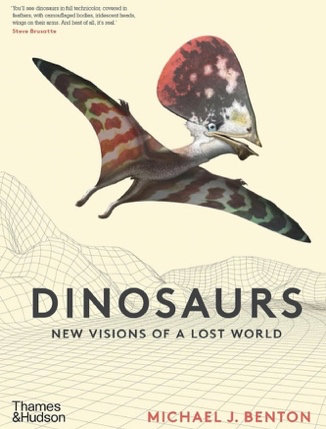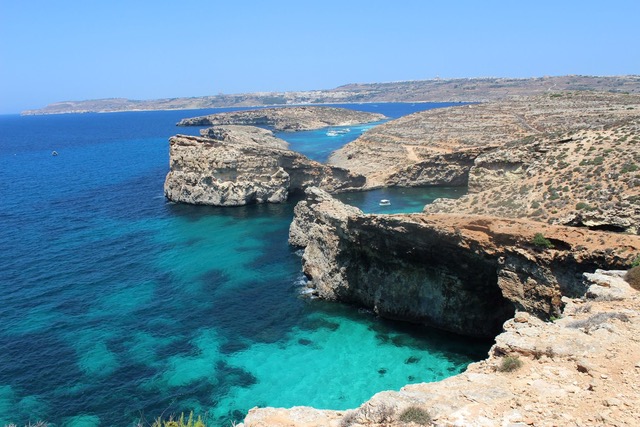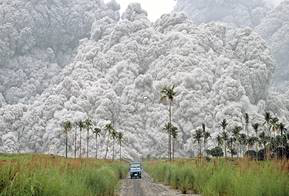Winter Programme Abstracts 2022-2023
Tuesday 20th September
Dinosaurs: New Visions of a Lost World (WGCG)
Professor Michael Benton OBE FRS FRSE (Sch Earth Sciences, University of Bristol) 
Dinosaurs are not what you thought they were, or at least, they didn’t look like you think they did. Rapid advances in technology and astounding new fossil finds have changed the way we visualise dinosaurs forever.
This will build on Prof Benton’s latest book ‘New visions of a lost World’, which is illustrated by acclaimed palaeoartist Bob Nicholls, to display the latest and most exciting dinosaur discoveries in vibrant colour.
This presentation, delivered in vivo, and broadcast on the internet, can be viewed
https://youtu.be/EVM4_yXbc8Q
Wednesday 28th September
A new fossil from the Ediacaran of Charnwood Forest confirms the antiquity of animal life
Dr Frances Dunn (Oxford University Museum of Natural History)
The rise of the animals was a profound transition in the History of Life that changed the planet irreversibly. However, the origin of animals remains one of the most controversial episodes in the evolution of life on Earth. Most animal groups appear in the fossil record during a major evolutionary radiation between ~520 and 550 million years ago known as the Cambrian Explosion, when the blueprints for the animal phyla (arthropods, vertebrates, jellyfish and others) were laid down and, remarkably, have changed little in the half a billion years since. My research is focused on the interval of time just before the Cambrian Explosion – the Ediacaran Period. While fossil representatives of the living animal phyla diversify in the Cambrian Period, the timing and nature of their earliest antecedents remains controversial. Fossil assemblages from the late Ediacaran Period, such as those in Leicestershire, preserve the remains of fossil organisms, with long-extinct bodyplans, that have perplexed palaeontologists for decades. I will introduce you to the Ediacaran fossils of Charnwood Forest, including the strange, frond-like, rangeomorphs, which once defied classification, but, that I will argue, are the most ancient animals in the known fossil record; before discussing a new fossil discovery that suggests that the ancient members of groups, which have survived to the present day, lived and died hidden amongst the fronds.
Wednesday 26th October
The History of the British Geological Society Collections
Dr Michael Howe B.A., PhD (National Geological Repository, British Geological Survey)
The National Geological Repository, part of the British Geological Survey, manages the largest collection of British geological samples, with the equivalent of over 13 million specimens, (compared to 10 million in the Natural History Museum, London.)
This talk traces the history of the collections, from the founding of the Geological Survey in 1835, and the opening of the Museum of Economic Geology shortly afterwards, through the Museum of Practical Geology (1851 – 1935) and the Geological Museum (1935 – 1985), to the move to Keyworth in 1985. It also covers the important BGS Collections in Edinburgh, where the “conodont animal” was first discovered.
We have worked since 2000 to take the Collections online, including hundreds of thousands of high resolution images, and thousands of stereopairs, and 3d digital fossil models; and this will feed into the UK and European Dissco Project
(Distributed Science Collections).
Interesting Links:
National Geological Repository:https://www.bgs.ac.uk/geological-data/national-geological-repository/
GB3D Type Fossils online: http://www.3d-fossils.ac.uk/
GeoIndex (BGS GIS system):https://mapapps2.bgs.ac.uk/geoindex/home.html
Dissco-UK: https://www.dissco-uk.org/
This presentation, delivered in vivo, and broadcast on the internet, can be viewed
https://youtu.be/saRpwYpNkiU
Thursday17th November
The NW Highlands Controversy: geology, geologists, and social climbing, in Victorian times. (WGCG)
Dr Peter Gutteridge
The NW Highlands of Scotland probably has the best scenery and geology in the world. There can be found the oldest rocks in the British Isles; the first evidence of life; ancient landscapes carved out by pre-Cambrian rivers; and beautifully exposed Lower Palaeozoic clastic and carbonate sediments. These all form part of a major fold-and-thrust belt, on which the now metamorphosed Moine schists were emplaced. However, geologist Roderick Impy Murchison saw this as a conformable succession.
It is worth asking the question: 'Why did Victorian geologists so completely miss evidence that is so obvious to geologists today?'.
The answers lie in the state of geological science at the time; geopolitics; and social climbing.
Resolution of the Moine Thrust Controversy was a turning point in the history of geology, and gave us the foundations of the science of geology as we now know it.
Wednesday 23rd November
Geology and Geoheritage of Gozo, Malta
Dr Laura McLennan. (University of Derby)

The Maltese Isles are a carbonate geologist's, and palaeontologist's, dream.
Due to the Mediterranean climate, and the zero-tolerance fossil collection policies, it is hard to escape the geology on the islands.
Everywhere you walk, you can see exposed bedrock and fossils.
The Maltese Isles are made of five carbonate-rich formations, which date from between 28 and 7 million years.
Deposited in a marine environment, these units are packed with macro, and micro, fossils, which help geologists to piece together Malta’s geological past.
The five formations tell a fascinating, and fairly continuous, story of climate, environmental, and biotic, changes, between those dates.
This talk introduces five amazing geological locations on the island of Gozo, Malta; which form part of a proposed geoheritage trail.
These locations tell stories of rapid climate change, biotic turn-over, mythical sea-monsters, and historical use of the Maltese geology.
WARNING: If you have not visited Malta before, you will be looking into flights for your next holiday after seeing what Gozo has to offer.
Tuesday 29th November
Explosive volcanic eruptions & asteroid impacts
Professor Michael J Branney (University of Leicester)
Mt Pinatubo 15/06/91 Pyroclastic density current Alberto Garcia
Giant explosive eruptions and asteroid impacts are the most cataclysmic events to affect the Earth’s surface, abruptly obliterating entire landscapes, and devastating the wider environment.
Yet they are a fundamental part of planetary evolution, and perhaps are more common than generally appreciated. So how can we find out what actually happens during these very brief events?
Mike Branney explains how forensic techniques developed to investigate smaller, historic, and present-day, volcanic eruptions, can be applied to larger, ancient examples. Layer, by tiny layer, ash deposits are used to reconstruct what happened in the minutes, and hours, of a rapidly unfolding catastrophe that one would not wish to witness first-hand. Using examples from disasters at Fuego (Guatemala) in 2018, Pompeii in AD 79, and Pinatubo in 1991, Mike shows how to start to piece together what happened during these, and then, staggeringly large, super-eruptions, such as at Yellowstone-Snake River, where vast regions (>20,000 km2) of the US were suddenly obliterated.
Mike’s group is applying this approach to discover just what happens when Earth is hit by a large asteroid. At the impact site, the Earth’s crust is pulverised, partly vaporised, and partly melted. A vast, ground-hugging, density current radiates outwards: comprised of searing hot gas, with fragments and droplets of melted rock. As at a volcanic super-eruption, this radial current swiftly sterilises, and then buries, the entire landscape under a blanket of ejecta. We know that this happens: several such ejecta sheets have been discovered. There is much more to understand; but at least we are now learning how to decipher the rapid-fire sequence of events that characterise these deposits.
Thursday 19th January
What sedimentary rocks can tell us about Astronomical Cycles and Climate in deep geological time
Jim Riding (Honorary Research Associate, British Geological Survey)
The Serbian scientist Milutin Milanković discovered the three astronomical cycles that have been affecting our planet; their periodicities; and how they influence the deposition of sedimentary rocks.
If we can recognise Milanković cycles, we can use them to work out the durations of major sedimentary successions, and thereby refine the geological timescale. Four case histories are given: one Carboniferous; two Jurassic; and one Pliocene.
The use of stable isotope analysis can help to interpret past palaeoclimates, and Milanković cycles.
Thursday 16th February
Birmingham's Erratic Boulders project (WGCG)
Zoe Jackson (Herefordshire & Worcestershire Earth Heritage Trust)
The Birmingham's Erratic Boulders Project - a National Lottery Heritage Fund support project - aims to document, promote and preserve the predominantly Arenig glacial erratics of SW Birmingham. The geology of the boulders will be described, including the most recent work carried out: XRF analysis and cosmogenic exposure dating. The fascinating social history of some of the boulders will be discussed, along with the pivotal characters involved in their discovery in the late 19th century, and the intriguing evolution of our understanding of the role of glaciers in the transport of the erratics. Public engagement, project outputs, and work to preserve the boulders in the future, will also be summarised.
Wednesday 8th March
Caldera Hunting in the Borrowdale Volcanic Group, English Lake District
Ed McGowan (University of Leicester)
This is the first phase of Ed’s PhD project, using geochemistry to establish potential correlations between pyroclastic deposits that are associated with caldera formation within the upper Borrowdale Volcanic Group. This enables the determination of the true extent of the widespread deposits, and traces them back to their source vents, particularly those in the Langdale, Helvellyn and Haweswater areas.
Thursday 16th March
Charles Darwin as a geologist, and the Voyage of the Beagle
Emeritus Professor Peter Worsley (School of Archaeology, Geography and Environmental Sciences, University of Reading)
In his time, Charles Darwin became one of the world’s leading geologists. The background to his geological training, prior to embarkation on the Beagle, will be outlined.
Some of the geological highlights which occurred during the long voyage will be visited, and discussed, along with an assessment of his geological publications.
Monday 3rd April
Flood Risk Management, Past, Present and Future (Jointly with the Parent Body of the LL&PS at The New Walk Museum, Leicester
Professor Lynne Frostick
Climate change is already impacting the rivers and coasts of our country. River flow records are exceeded on a regular basis and sea level rise is accelerating.
Even if the world population agreed to stop emitting carbon dioxide today, there is at least a hundred years of embedded change already in progress. This lecture will outline past and present trends in flood risk; and then suggest ways society can adapt to become resilient to the threat of flooding.
Thursday 20th April
The geology of the Chilterns and the potential impact of HS2
Dr Haydon Bailey
The Chiltern Hills are underlain by Chalk, predominantly what was traditionally called the Middle Chalk (now the lower part of the White Chalk Group) capped by the Top Rock - Chalk Rock complex. It is this series of chalk hardgrounds which effectively forms the spine of the Chiltern Escarpment. The Chalk dips gently into the London Basin; and the overlying basal Tertiary succession provides minor outliers around this northern rim of the basin.
The other major geological event we have to recognise in this area is the re-routing of the Proto-Thames River during, and following, the Anglian glaciation, some 450,000 years ago. This created the landscape we currently see in much of the southern parts of the Chilterns. The route of the HS2 fast rail link passes straight across the Chilterns Area of Outstanding Natural Beauty (AONB), and the geology underlying this region is being impacted during tunnelling. Concerns will be raised regarding the tunnelling under the Chilterns, the geology it will encounter, and its impact on Chalk aquifer and the surrounding AONB.